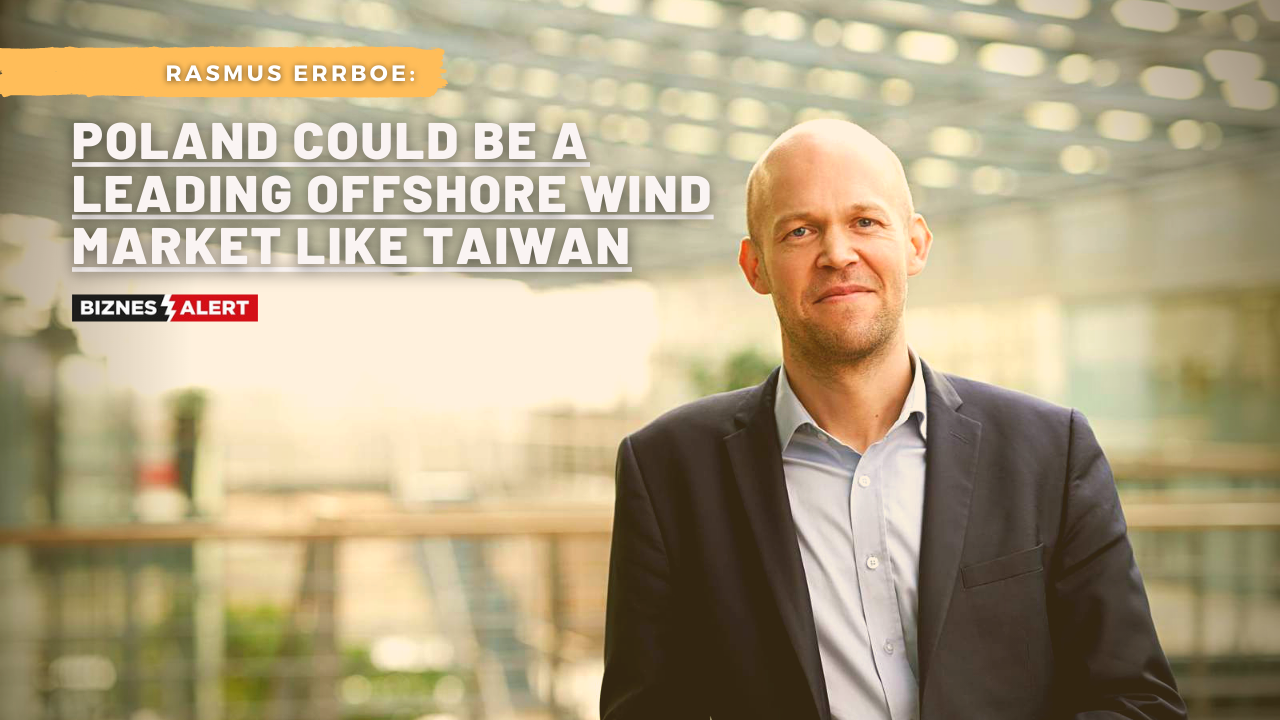Offshore wind is a great opportunity for Poland as it can not only produce green, homegrown power at large scale; it will also generate jobs and economic activity in Poland. But obviously, challenges and unforeseen events are inevitable when building large infrastructure projects – says Rasmus Errboe from Orsted in an interview with BiznesAlert.pl.
BiznesAlert.pl: What will be Orsted’s contribution to the Polish wind farm program? In other words, in which areas of the Baltica 2 and Baltica 3 project Orsted will bring its know how and experience?
Ørsted will be responsible for constructing and operating the offshore wind farms, while PGE will be in charge of onshore construction and permitting.
What will Polish companies (such as PGE as a partner) bring to such a cooperation with Orsted?
It’s very valuable for Ørsted to have a partner who has decades of experience in the Polish energy sector, is used to constructing onshore power infrastructure, knows how to get projects permitted, and has experience in trading power on the Polish power market. More broadly speaking, these huge infrastructure projects offer a great opportunity for Poland’s industrial supply chain to get a share of the globally expanding offshore wind industry. Likewise, Polish harbours have an opportunity of becoming strategic hubs for load out of large components as well as service and maintenance of offshore wind farms.
How do you perceive the support system in Poland in comparison with auction system (established for the second phase)?
Visibility and good framework conditions are key to attracting long-term infrastructure investments. Poland has chosen the right approach by committing to an ambitious target of installing 11 GW offshore wind by 2040 and by offering some certainty in the first phase through direct awards before moving to auction-based awards when the market has been established. This is quite similar to the approach successfully adopted by Taiwan which has become a leader in offshore wind in Asia-Pacific.
What could be the cost of energy from the OWF’s. do you perceive it as a challenge or not? What other challenges can you see from your perspective e.g. time of the construction of such megaprojects/ any others?
According to McKinsey’s “Emission-neutral Poland 2050” report from 2020, the levelized cost from offshore wind power could drop to approx. EUR 40 per MWh in 2035, not including tariffs and taxes. This is in line with projections for other EU countries.
Offshore wind is a great opportunity for Poland as it can not only produce green, homegrown power at large scale; it will also generate jobs and economic activity in Poland. But obviously, challenges and unforeseen events are inevitable when building large infrastructure projects. Typically, the developers’ costs will be higher in a new market until the local supply chain has been matured. Also, permitting can be a challenge in new markets where other users of the sea space – wildlife, fishermen and other commercial shipping, the navy – aren’t used to coexisting with offshore wind farms. We – together with PGE – will of course do our very best to keep a close and transparent dialogue with all relevant stakeholders and share our experience from other markets.
Interview by Wojciech Jakóbik









